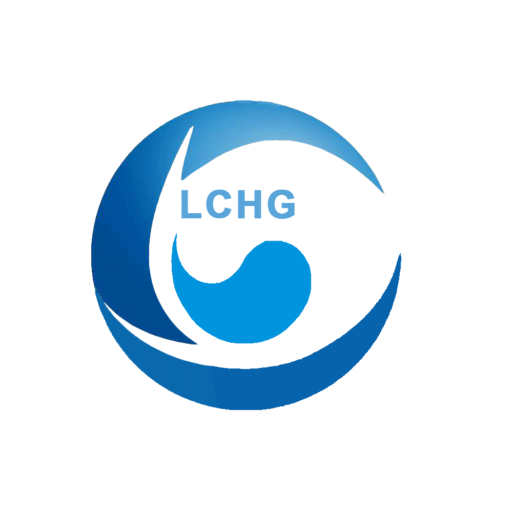UV 背光油墨
紫外发光油墨是在透明油墨中加入发光材料制备的一种特殊功能油墨,目前已得到广泛应用。一般的发光油墨是在热固化油墨中掺入发光材料,通过热固化制备出发光产品,很难在 UV 油墨中使用,这是由发光材料的特殊性决定的。发光材料即长余辉发光材料,是一种粒径为10~60μm的无机粉末材料,在特殊条件下粒径甚至更大,这种粉末材料具有一定的体色和不透性,在实际使用中需要印刷一定的厚度才能体现较好的发光效果,这些问题给UV固化发光油墨的使用带来一定的困难。
将发光粉加入油墨中是制备发光油墨的常用方法,过去都是采用热固化油墨和发光粉混合制备发光油墨。随着 UV 技术的发展,将发光粉与 UV 油墨结合制备 UV 发光油墨的方法已逐渐被广大印刷生产厂家所采用,特别是在制作发光标志时用 UV 发光油墨代替热固化发光油墨具有相当大的优势。用丝网印刷技术印刷 UV 发光油墨是制备发光标志的常用方法。
① 发光粉的选择:UV发光油墨在丝网印刷中要考虑发光粉的选择,发光粉的基本要求是亮度高、粒度适中。粒径大的不能从丝网上漏印,粒径小的印刷厚度不够,需要增加印刷次数才能达到厚度要求,费工费时,一般选用 50 ~ 80μm 的夜光粉比较合适。稀土发光粉呈浅黄绿色,所以选择制作标牌的基材以蓝色或绿色为宜。
②网版制作。发光标牌一般要求发光层印得较厚,所以通常采用 80 目涤纶单丝网版,这样可以使发光粉通过网版,同时印出的发光层也较厚。在制版时应考虑到一般标牌产品如一些地名标牌往往同一图案不会连续印刷多次,在这种情况下,可以选择低档耐油的感光树脂,可以节约成本。
预涂底漆。在印刷发光层之前需要先印刷一层白色的承印物,将发光层印刷在白色的承印物上。印刷基材层是印刷发光油墨的必要步骤之一,预涂基材表面有利于提高发光油墨的发光性能。使用不同颜料的基材层对油墨的发光性能影响是不一样的,添加二氧化钛的白色基材层最有利于提高发光油墨的发光性能,这是因为白色基材层可以使透过油墨层的入射光以及发射的荧光更充分地反射出来,最大限度地发挥发光油墨的作用。
需要注意的是,UV 发光油墨需要在白色基材上有良好的附着力,否则固化后发光油墨层容易脱落,一般采用白色 PVC 油墨,因为大多数 UV 油墨在 PVC 油墨层上有良好的附着力,从而避免了发光层从标牌上脱落的现象。
在多次印刷和固化时要注意层间附着力。使用 UV 发光油墨要注意一个很重要的问题,制作标牌时往往需要发光层达到一定的厚度,这就需要多次印刷才能达到厚度要求。由于 UV 油墨是印刷一次后立即固化,固化后表面光滑,在进行下一次印刷时是在上一层的基础上进行的,此时需要 UV 油墨各层之间有良好的附着力,不能出现分层现象。因此,在选择 UV 油墨时要特别注意层间附着力的问题。
长余辉发光材料与 UV 油墨结合印刷使用需要注意以下问题。
长余辉发光材料是一种无机粉体材料,发光材料密度大易析出,使用前需搅拌均匀,同时发光材料易与铁锈、重金属等发生反应,因此在分散研磨过程中不宜使用金属棒,也不宜存放在金属容器中,否则会导致材料变黑,影响材料的使用效果。容器选用玻璃、陶瓷、搪瓷衬里、塑料容器为宜。
发光油墨成膜后,发光吸光功能是由发光材料颗粒实现的。由于要求通过发光材料粘合在一起的树脂应具有良好的透光性,无遮盖力,所以选用的树脂、清漆应以无色或浅色透明为宜。
发光材料的含量越高,光度越亮,但为了使发光材料与涂覆产品有适当的附着力,树脂的比例至少不应低于 10%。当然,树脂的比例越高,发光涂层的光滑度和光洁度就越高。因此,发光材料的用量一般为总质量的 20%-60% 或体积的 10%-35%,或根据发光亮度的要求确定发光材料的用量。
UV发光油墨在丝网印刷中要考虑发光材料的选择,发光材料的基本要求是亮度高、粒径适中。粒径小的不能从丝网上漏出,粒径小的印刷厚度不够,需要增加印刷次数才能达到厚度要求,浪费时间,使用 20 ~ 80μm 的发光粉比较合适。发光材料的色彩比较丰富,制作标识产品一般选用浅黄绿色的发光材料。
生产过程中,发光材料不能研磨,不能使用三辊研磨机,配制发光油墨时,只能使用高速分散机或搅拌机。具体方法是将树脂或清漆放入容器中,加入添加剂,开启搅拌器,加入防沉剂,在缓慢搅拌状态下依次加入发光材料。加入发光材料后,提高转速,直至发光材料均匀分散在材料中,然后过滤得到产品。
不得将重金属化合物用作添加剂。
注意网目尺寸的选择。一般发光材料由于粒度较大,需要较小的丝网,通常采用 100 目丝网印刷较好。印刷后产品的固化程度也对产品的最终质量有影响,可通过以下四种方法检测固化是否完成。一是用铅笔硬度计进行测试,一般为 3~4H 时,可认为油墨已完全固化。二是滴溶剂法测试,也是测试耐溶剂性的方法,将丙酸滴在印品表面 20min 后,如无变化证明已完全固化。三是压缩法试验,即将棉纤维置于印花表面,用一个底部光滑的 500g 重物压在棉纤维表面 2 ~ 3min,然后取下重物,若棉纤维不粘在印花表面证明已完全固化。四是网格测试法,利用网格力在印品表面划十字,然后用胶带粘在十字表面,如果没有粘墨,说明固化完成,固化后墨层的附着力比较好。
